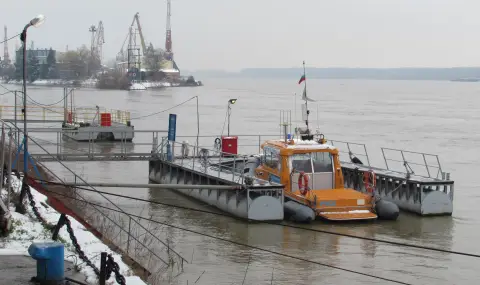In 1929, the Danube near Silistra was an "ice rink". They used to sled on it to the opposite bank. However, the record is from 1954, when the river was frozen for a full 74 days, recalls the Bulgarian National Radio.
According to statistics, in the period 1900 - 1964, the Danube froze 27 times. However, after that - in 1985, when it lasted 2 months - from January 16 to March 16, in 2006 partially and completely again in 2012 and 2017.
In the cold winters of the past, children were healthy and played in the snow all day, and in the evening they gathered with the family by the fireplace for chicken stew.
The last freezes on the Danube River in more recent times were in 2012, when the Romanians broke the ice with explosions, and in 2017, when throughout January, the people of Silistra had the opportunity to take pictures for the memory of generations.
The ice near Silistra was broken with explosions in 1985. They chose the river in the Aydemir region as a suitable location - this is how they saved the western part of Silistra from flooding.
In addition to the ice, the explosions shattered the windows of the apartment blocks near the Danube Garden, as well as the Natural and Mathematical High School. The damages were paid for by the then Commission on Natural Disasters and Industrial Accidents.
A battery from the division in Shumen arrived specifically for the "bombardment" in Silistra. Since then, it seems like we haven't seen a real winter here in this part of the country. At least not the kind that Evdokia Savova from Tutrakan, who grew up in the village of Dobrotitsa as a child, remembers.
It is also a public secret why the children were healthy then, as well as their parents. In this winter, which Evdokia Savova remembers, in 1954, the Danube froze for 74 days.
The people of Silistra also remember the years when the ice thickness reached 30 centimeters, writes the Bulgarian National Radio.
The children played, and the older ones skated with modern skates purchased from the neighboring larger cities - Ruse and Varna. For the poorer ones, there were skates that were screwed onto the soles of their winter shoes. The young people skated with sledges and charmed the girls.
According to historical archives, when Silistra was within Romania (1918-1940), every time the Danube froze, the local rich people would jump on sledges and set off on the ice to cross to the other side of the river and visit the so-called. in the opposite city of Calarasi. In good weather they would reach as far as Bucharest.
The ladies also have memories of winters by the Danube, when they would go into the river with their gentlemen on the ice to whisper love poems to each other in a stuck wooden boat.
